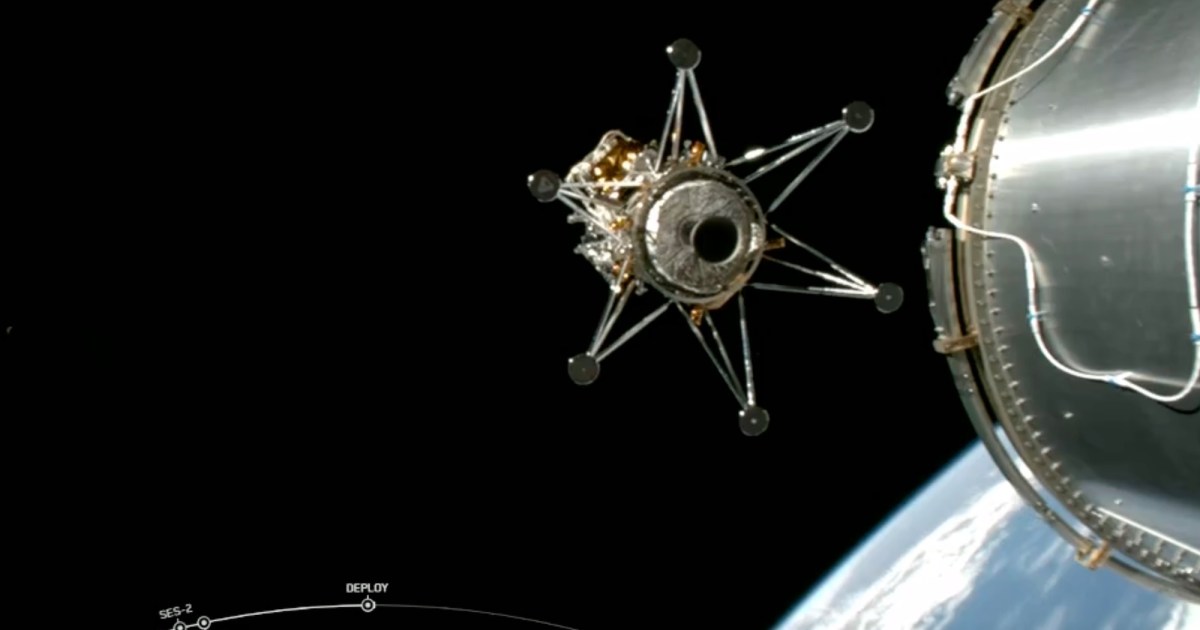
SpaceX successfully launched a commercial mission to the moon from the Kennedy Space Center in Florida in the early hours of Thursday morning.
A Falcon 9 rocket carried Intuitive Machines’ Odysseus lander to orbit, setting it on course for a rendezvous with the lunar surface next week.
As recent attempts to reach the moon have shown, it’s no easy task, and if Texas-based Intuitive Machines succeeds with Odysseus, it will become the first private company to achieve the feat. It would also mark the first soft lunar landing by a U.S. spacecraft since the final Apollo mission more than five decades ago.
Liftoff of IM-1! pic.twitter.com/Knl3Y1sGo2
— SpaceX (@SpaceX) February 15, 2024
SpaceX shared a video showing the Odysseus spacecraft separating from the Falcon 9 at the start of its solo voyage to the moon:
Deployment of @Int_Machines IM-1 confirmed pic.twitter.com/daPrWFkVng
— SpaceX (@SpaceX) February 15, 2024
Following a successful touchdown near the lunar South Pole, the lander will deploy 12 payloads — six for NASA and another six for commercial entities. They include proof-of-concept cloud storage technology, a special telescope, and a “secure lunar repository” that will “preserve human knowledge for eternity.” It also has with it a camera that’s designed to drop to the ground ahead of the lander while capturing images of the vehicle’s descent.
The payloads will operate for about seven days until the lunar night sets on the South Pole, rendering Odysseus inoperable.
Commenting on the mission on Tuesday, Trent Martin, Intuitive Machines’ vice president of space systems, described it as “a profoundly humbling moment” for everyone at the company, adding: “The opportunity to return the U.S. to the moon for the first time since 1972 is a feat of engineering that demands a hunger to explore.”
Martin added that his team was not “overlooking the challenges that lie ahead. Any venture into uncharted territory carries risk, yet this willingness to embrace the risk and push beyond our comfort zones propels us forward and drives innovation.”
The launch marked the 18th flight of SpaceX’s first-stage Falcon 9 booster, which previously launched GPS III-3, Turksat 5A, Transporter-2, Intelsat G-33/G-34, Transporter-6, and 12 Starlink missions. Following stage separation, the booster returned to Earth, making a successful upright landing close to the launch site, paving the way for a possible 19th mission.
Editors’ Recommendations
Services Marketplace – Listings, Bookings & Reviews
